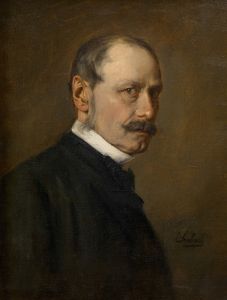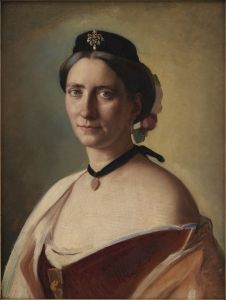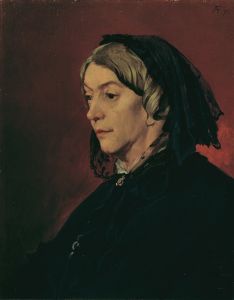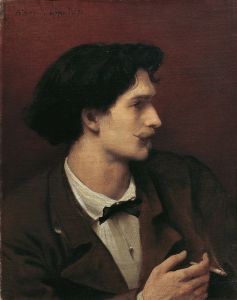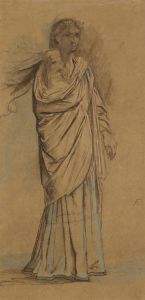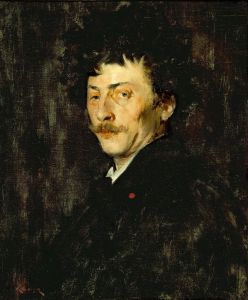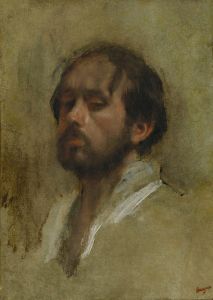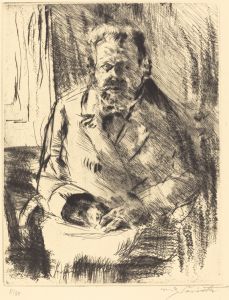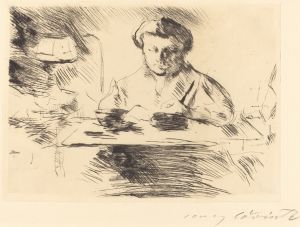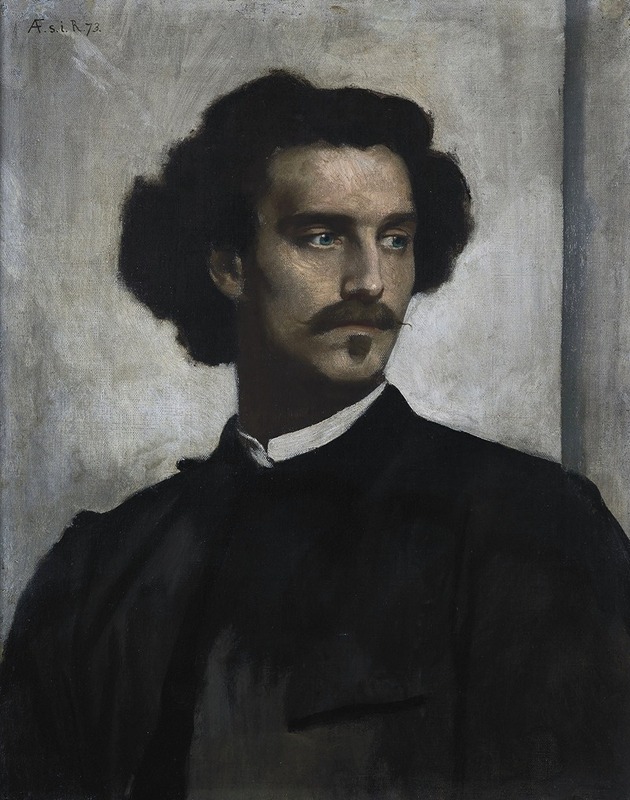
Self-portrait
A hand-painted replica of Anselm Feuerbach’s masterpiece Self-portrait, meticulously crafted by professional artists to capture the true essence of the original. Each piece is created with museum-quality canvas and rare mineral pigments, carefully painted by experienced artists with delicate brushstrokes and rich, layered colors to perfectly recreate the texture of the original artwork. Unlike machine-printed reproductions, this hand-painted version brings the painting to life, infused with the artist’s emotions and skill in every stroke. Whether for personal collection or home decoration, it instantly elevates the artistic atmosphere of any space.
Anselm Feuerbach was a prominent German painter of the 19th century, known for his classical style and depictions of mythological and historical themes. His self-portrait, titled "Self-portrait by Anselm Feuerbach," is a significant work that provides insight into the artist's self-perception and artistic style.
Feuerbach was born on September 12, 1829, in Speyer, Germany, into a family with a strong intellectual background. His father was a well-known archaeologist, and his grandfather was the philosopher Paul Johann Anselm Ritter von Feuerbach. This intellectual environment influenced Feuerbach's artistic development and his interest in classical themes.
Feuerbach studied at various art academies across Europe, including those in Düsseldorf, Munich, and Paris. His time in Paris was particularly influential, as he was exposed to the works of the Old Masters and contemporary artists, which helped him refine his technique and develop his distinct style. Feuerbach's work is characterized by its classical composition, attention to detail, and use of muted colors, which are evident in his self-portrait.
The self-portrait by Anselm Feuerbach is a reflection of his introspective nature and his dedication to the ideals of classical beauty. In this painting, Feuerbach presents himself with a calm and contemplative expression, emphasizing his serious approach to art and life. The composition is simple yet effective, focusing on the artist's face and upper body, with a neutral background that does not distract from the subject.
Feuerbach's self-portrait is notable for its realistic depiction and the subtle use of light and shadow, which add depth and dimension to the image. The artist's gaze is direct and engaging, inviting viewers to connect with him on a personal level. This work exemplifies Feuerbach's mastery of portraiture and his ability to convey complex emotions through simple yet powerful imagery.
Throughout his career, Feuerbach was associated with the Düsseldorf School of painting, which emphasized a detailed and realistic approach to art. However, he also drew inspiration from the Italian Renaissance and the works of artists like Titian and Raphael, which is evident in the classical elements present in his self-portrait.
Feuerbach spent a significant portion of his career in Italy, where he was deeply inspired by the country's rich artistic heritage. This influence is reflected in his self-portrait, which combines German precision with Italian elegance. His time in Italy also allowed him to study ancient Roman and Greek art, further enriching his understanding of classical aesthetics.
Despite his talent and dedication, Feuerbach's work was not widely recognized during his lifetime. He struggled with financial difficulties and often felt overshadowed by his contemporaries. However, his self-portrait and other works have gained appreciation posthumously, as art historians and critics have come to recognize his contributions to 19th-century art.
Anselm Feuerbach passed away on January 4, 1880, in Venice, Italy. Today, his self-portrait remains an important piece of art, offering insight into the mind of a dedicated and introspective artist who sought to capture the timeless beauty of the classical world.





